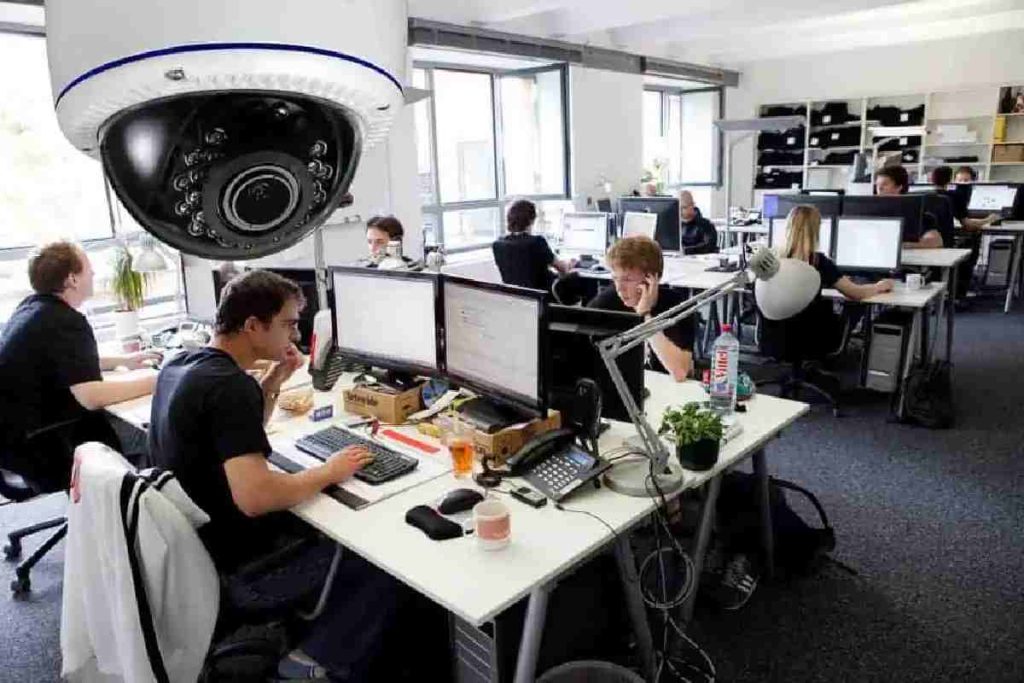Office surveillance systems have become an integral part of modern business security. As companies continue to prioritize safety, efficiency, and accountability, surveillance technology plays a crucial role in protecting assets, employees, and sensitive data. With advancements in smart technology, businesses now have access to sophisticated systems that go beyond traditional security cameras, offering features that improve overall workplace management.
Table of Contents
Enhancing Security and Preventing Unauthorized Access

A well-implemented office surveillance system is a powerful tool for preventing security breaches. Unauthorized access to office spaces can lead to financial loss, compromised data, and potential harm to employees. Modern surveillance solutions utilize high-definition cameras, motion sensors, and facial recognition technology to monitor and control entry points effectively. Businesses can integrate access control systems with surveillance cameras to ensure that only authorized personnel can enter restricted areas.
Security threats are not limited to external intrusions. Internal risks, such as employee theft or misconduct, can also pose challenges. Surveillance technology helps deter such behavior by creating a transparent work environment where actions are recorded and reviewed when necessary. With real-time monitoring, business owners and security teams can respond promptly to suspicious activities, reducing the likelihood of major security incidents.
Additionally, the presence of visible surveillance cameras acts as a deterrent, discouraging potential wrongdoers from engaging in illegal or unethical behavior. When employees and visitors know they are being monitored, the chances of security violations decrease significantly, contributing to a safer workplace.
Boosting Employee Productivity and Accountability
While the primary function of office surveillance systems is security, they also contribute to employee productivity and accountability. In workplaces where efficiency is essential, monitoring employee activity can help identify areas for improvement. Surveillance footage allows managers to assess workflow patterns, evaluate performance, and make informed decisions about task delegation.
Remote monitoring capabilities have made it easier for business owners to oversee daily operations, even when they are not physically present. Smart surveillance systems provide access to live video feeds through mobile devices, allowing managers to keep track of employee attendance, work habits, and adherence to company policies. This level of oversight fosters a culture of accountability, as employees are more likely to stay focused and perform their duties diligently when they know their activities can be reviewed.
Maintaining a balance between surveillance and privacy is crucial. Employees should be aware of monitoring practices and understand that the system is in place to enhance workplace efficiency rather than to create an atmosphere of distrust. Open communication about the purpose of surveillance fosters a positive work environment where security measures are seen as beneficial rather than intrusive.
Leveraging Smart Technology for Advanced Surveillance
Advancements in surveillance technology have transformed traditional security measures into intelligent systems that offer more than just video recording. Artificial intelligence, cloud storage, and integration with other smart office solutions have expanded the capabilities of surveillance systems, making them indispensable for modern businesses.
AI-powered surveillance systems can analyze video footage in real time, identifying unusual behavior or potential threats. These systems can differentiate between normal office activities and suspicious movements, sending instant alerts to security personnel when necessary. This proactive approach minimizes the chances of security breaches by enabling quick intervention before situations escalate.
Cloud-based surveillance solutions offer enhanced storage capabilities, eliminating the need for extensive physical storage devices. Businesses can access recorded footage remotely, ensuring that video evidence is always available when needed. Cloud storage also provides an extra layer of protection against data loss, as files remain secure even in the event of hardware failure.
Integration with other smart office systems further enhances the efficiency of surveillance technology. Businesses can link security cameras with automated lighting, alarm systems, and even workplace analytics tools to create a cohesive security network. Smart sensors can trigger cameras to start recording when motion is detected in restricted areas, ensuring comprehensive coverage without unnecessary recording of inactive spaces.
Choosing the Right Surveillance System for Your Office
Selecting the right office surveillance system depends on various factors, including business size, security needs, and budget. High-resolution cameras with night vision capabilities are essential for ensuring clear footage in all lighting conditions. Wireless surveillance solutions provide flexibility in installation, making them an excellent option for offices with dynamic layouts.
Businesses with multiple locations benefit from centralized surveillance systems that allow seamless monitoring of all sites from a single dashboard. Customizable features, such as AI-powered analytics and automated alerts, enhance the overall effectiveness of the surveillance setup. Investing in a scalable system ensures that security measures can evolve alongside business growth, adapting to changing security requirements.
Professional installation and regular maintenance play a crucial role in ensuring that surveillance systems function optimally. Working with security experts to design a tailored surveillance strategy helps businesses maximize the benefits of their investment. Additionally, staying updated with the latest advancements in surveillance technology ensures that businesses remain ahead of potential security threats.
Implementing an office surveillance system is a proactive step toward safeguarding business operations, improving workplace efficiency, and ensuring employee safety. By leveraging smart technology and adopting a strategic approach to surveillance, businesses can create a secure and productive work environment.

